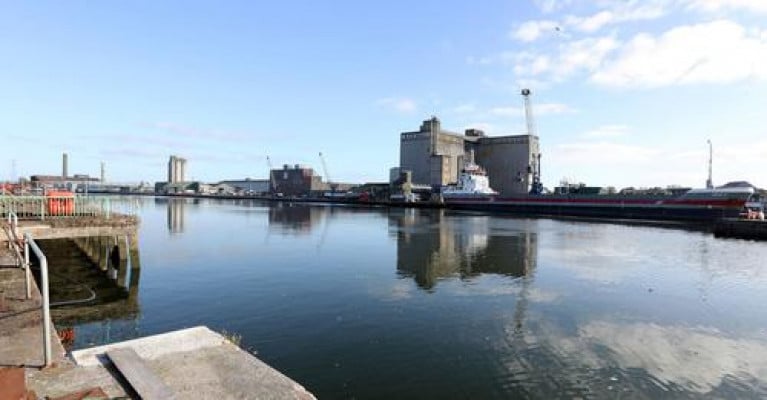Displaying items by tag: South Docks plan
Port of Cork and Cork City Council Reach 'Agreement in Principle' on Future Sale of City Quays
As the Irish Examiner reports, Cork City Council is set to spend millions buying the Port of Cork’s city-centre quays to help facilitate one of the largest docklands regeneration schemes in Europe.
The local authority and the commercial semi-State company have reached an “agreement in principle” that will see the council acquiring around 1.5km of quayside along the city's north and south docks following the relocation of the port company’s city centre operations to its expanded facilities downstream at Ringaskiddy.
Neither side has commented on the purchase price but it is understood that the figure will run to several million euro — significantly below the estimated €26m that was offered by the city at the height of the property boom when the port was planning its relocation downstream.
The agreement, which it is understood was signed off last Friday, now paves the way for detailed negotiations between both sides on the heads of the agreement.
Both parties have agreed to establish working groups to hammer out the detail.
Much more from the newspaper here.
In addition below is a Statement from Conor Mowlds, Chief Commercial Officer, Port of Cork Company which was issued yesterday (Wednesday 25th May 2022)
Contrary to reports in the media today, the Port of Cork Company (PoCC) has not signed a contract with Cork City Council to acquire the Port of Cork City Quays.
As per our media statement yesterday, we have agreed to enter into talks with Cork City Council to develop a Heads of Agreement, to eventually relocate port activity downriver from the City Quays. A key point of this agreement will be to ensure that PoCC continues to facilitate trade within the City Quays, and we wish to reassure our clients, our staff and stakeholders that there will be no handover of the quays until proper infrastructure, including the construction of the M28, is in place.
The Port of Cork Company maintains its support for the Cork Docklands redevelopment potential. It remains an objective that all Port City Centre business will relocate downriver towards Tivoli, Marino Point and Ringaskiddy, however this future development will only take place with consultation with all relevant stakeholders.
























































